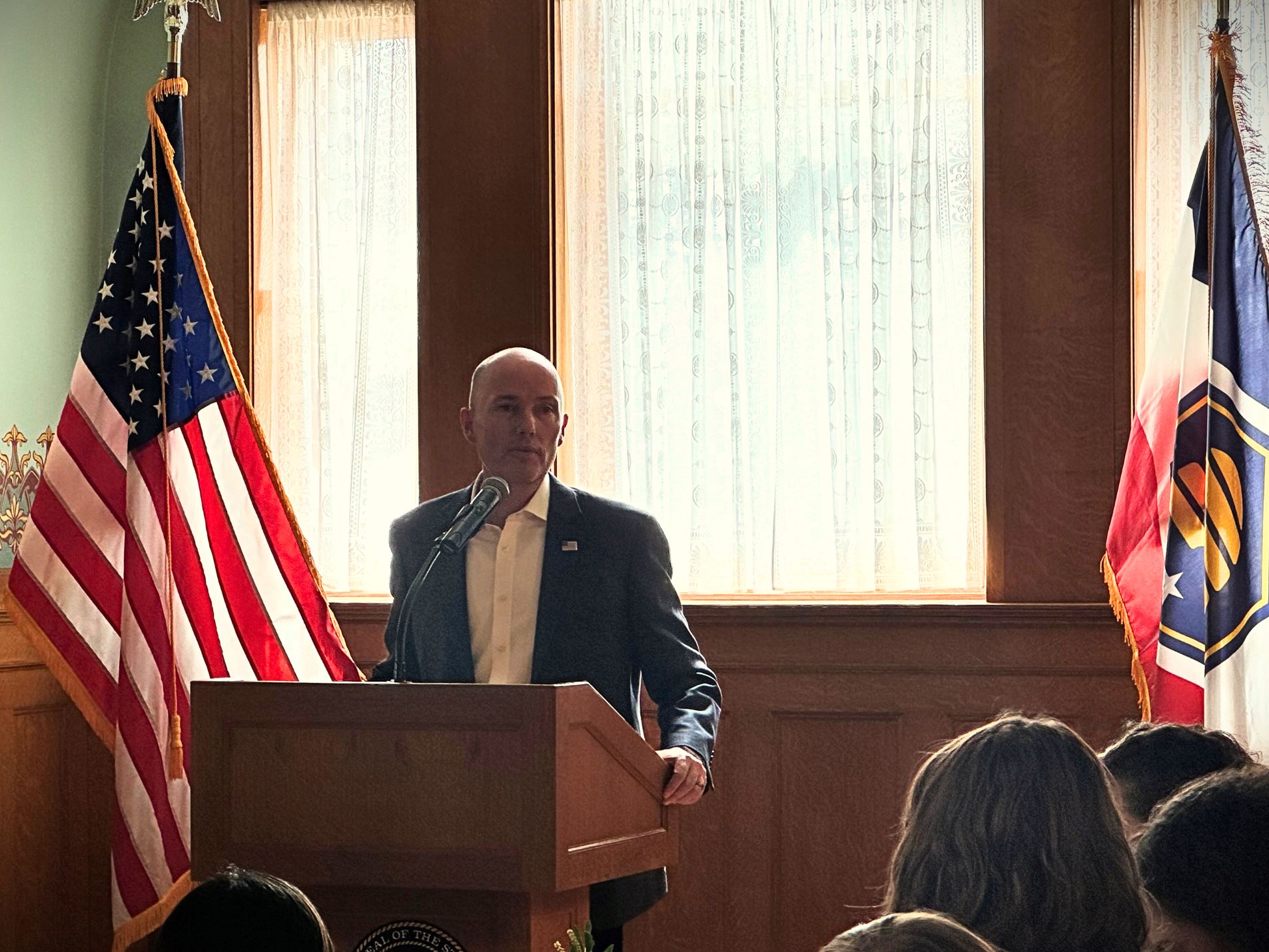Thank you, Madam Secretary and the members of the Commission for hosting this roundtable with national organizations representing state and local governments. I am Ray Scheppach, Executive Director of the National Governors Association, which represents governors from all 55 states, commonwealths and territories.
While governors face enormous fiscal challenges at home from programs competing for a finite share of revenue, governors know that a strong, viable and diverse surface transportation system is important since it both sustains our citizens’ quality of life, and promotes the flow of interstate and international commerce so critical to our nation’s competitive position in the global economy.
This critical infrastructure requires cooperation among all levels of government to help find solutions to its fiscal and policy challenges because state and local governments are the owners and operators of the majority of the nation’s surface transportation infrastructure. Moreover, the federal government has a clear interest in a free-flowing, national system that encourages the movement of people and commerce.
The needs of this surface transportation infrastructure are growing rapidly. Vehicle miles traveled have grown by more than 35 percent since 1990,[1]freight shipments are expected to double by 2035,[2] and the demand for public transportation has increased 30 percent since 1995.[3] At the same time, the American Association of State Highway and Transportation Officials estimates that between 1993 and 2015, the buying power of the federal gas tax will have decreased by 70 percent.
Unfortunately, surface transportation needs must compete for limited resources with other priorities in each state and, unlike the federal government, state governments are statutorily required to balance their budgets every year.
Long-Run Structural Deficit
Unfortunately, state governments have long-run structural imbalances in their revenue and expenditure systems. A major part of this imbalance is caused by an antiquated revenue system created for a goods economy in the 1940s or 1950, not for the service-oriented, high technology, international economy of the 21st century. This problem is best seen in state sales taxes, which represent about 40 percent of state revenues. With the exception of about four states, states tax goods, not services, at a time when services represent most of the growth in the economy. This is to say nothing about the significant loss of revenues as goods migrate to the Internet where few sales are taxed at all. On the spending side of the equation, Medicaid, which represents 22 percent of state budgets, has averaged 11 percent growth over the last 25 years. Other healthcare spending, which represents another 8 percent of expenditures, is similarly growing at double digit rates. While states many appear to have surpluses at various times over the cycle, it is really the long-run trends that are important. The long term trend for revenues due to the antiquated tax systems coupled with the rapid growth of health care causes a serious long-run structural imbalance. This does not even consider the 30 percent of state budgets that fund elementary, secondary and higher education, which needs to be boosted for the U.S. to remain competitive in the new knowledge-based world marketplace. This leaves little room for states to take on an increased role in surface transportation.
Still, states are addressing their critical transportation infrastructure needs through traditional methods like taxing users and bonding, and newer methods such as public-private partnerships. For instance, the average state gas tax is 20.9 cents,[4] more than the 18.4 cent tax levied by the federal government, and 12 states levy a motor fuel tax rate that is 25 cents or more.[5] In addition to these traditional motor fuels, ten states levy motor fuel sales taxes, and seven states have variable or indexed rates. Three states – Arkansas, Delaware, and West Virginia – even raised gas taxes in 2007.[6]
These tax rates indicate that governors recognize the importance of the transportation system. In 2007, 21 governors in their “State of the State” addresses highlighted efforts to improve transportation. However, governors face a dilemma between the need to find sufficient revenue to meet expanded transportation demands and the political unpopularity of increasing transportation user fees, especially as gas prices approach $4 a gallon.
Federalism
As with most federal/state programs, there is always a question regarding what share should be paid by the federal government and what share should be paid by state and local governments. This is true of Medicaid, welfare, food stamps, education and highways. While there is no rule, it is true that it should depend on whether 1) it is in the national interest; and 2) there is a major interstate component. Because an efficient highway system is so critical to long-run economic growth and a high wage economy, it is easy to state that it meets the first criteria of being in the national interest. Regarding an interstate component it is also true that there is a major interstate need, which means a federal responsibility with its redistribution mechanism. In the simplest explanation, why should a thinly populated state have responsibility for a major interstate highway that crosses the state and mostly benefits non-residents of the states. Federal tax revenues collected from all U.S. residents and provided to an individual state via a grant is the appropriate funding approach in our federal system. We can argue about the exact share from the federal government, but no one should doubt the necessity of a continual strong federal presence in any interstate system.
Hard choices on surface transportation policy and finance are here now.
A cooperative federal-state-local partnership is critical to the success of our nation’s surface transportation system. The Governors remain committed to working collaboratively with our federal, local, regional, and private sector partners to finance, maintain and improve our surface transportation infrastructure and services.
Thank you.
[1] Surface Transportation Funding: Options for States, National Conference of State Legislatures, May 2006
[2] Freight Analysis Framework, Federal Highway Administration, 2007.
[3] “Americans Take More Than 10 Billion Trips on Public Transportation for the First Time in Almost Fifty Years, American Public Transportation Association News Release, March 12, 2007.
[4] State Policy Options for Funding Transportation, National Governors Association, February 2007.
[5] Surface Transportation Funding: Options for States, National Conference of State Legislatures, May 2006
[6] Ibid.












